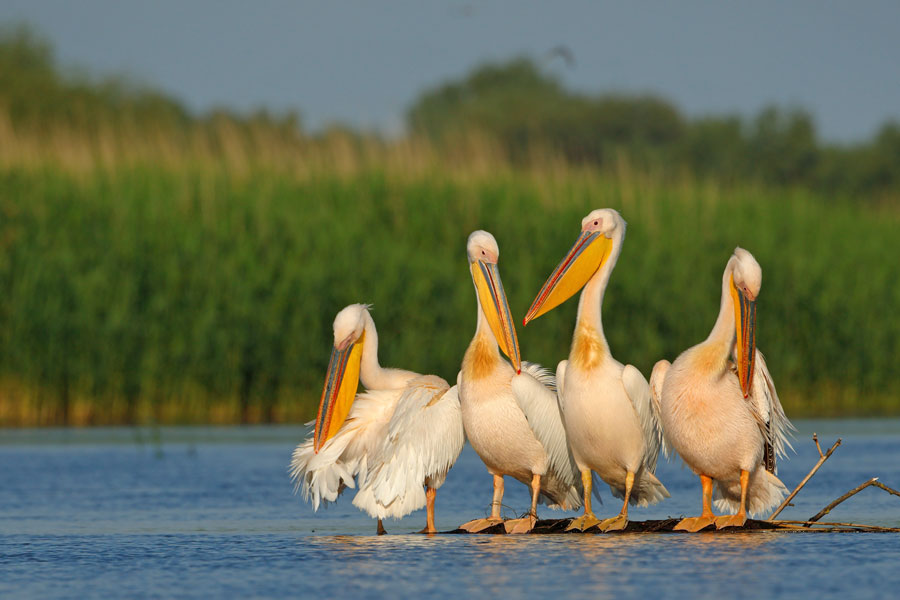Pelican Island National Wildlife Refuge

Located in North Beach, Florida, along Florida’s scenic Indian River Lagoon, Pelican Island National Wildlife Refuge holds the distinction of being America’s first national wildlife refuge, established in 1903 by President Theodore Roosevelt. Spanning over 5,400 acres, this ecological treasure is home to a rich diversity of wildlife, lush coastal habitats, and stunning water views. As part of the larger National Wildlife Refuge System, Pelican Island remains a premier destination for birdwatching, hiking, photography, and environmental education, offering a pristine and protected landscape for visitors to explore.
Things to Do at Pelican Island National Wildlife Refuge
- Explore the Historic Pelican Island
Pelican Island is the heart of the refuge, protecting vital habitat for native and migratory birds:- The island provides nesting grounds for species like brown pelicans, egrets, herons, roseate spoonbills, and wood storks.
- View the island and its thriving bird populations from designated observation points and viewing platforms.
- Interpretive signs along the trails highlight the island’s history, ecological importance, and wildlife conservation efforts.
- Birdwatching
A paradise for bird enthusiasts, the refuge offers unparalleled opportunities to observe native and migratory species:- Spot pelicans, ospreys, bald eagles, anhingas, cormorants, and seasonal migratory birds.
- The refuge is part of the Great Florida Birding Trail, drawing birders from around the world.
- Bring binoculars and visit during early morning or late afternoon for the best birding experience.
- Hiking the Trails
Explore scenic trails that wind through the refuge’s diverse coastal habitats:- Centennial Trail: This ¾-mile boardwalk trail leads to an observation tower overlooking Pelican Island and the surrounding lagoon. Interpretive panels along the path provide insights into the refuge’s history and wildlife.
- Joe Michael Memorial Trail: A longer trail that meanders through oak hammocks and salt marshes, offering a serene hiking experience and excellent wildlife viewing.
- Wildlife Viewing Areas: Platforms and benches along the trails allow visitors to pause and take in the beautiful landscapes.
- Wildlife Viewing
Beyond its iconic birdlife, the refuge is home to a variety of other wildlife species:- Look for manatees and dolphins in the lagoon’s waters.
- Spot gopher tortoises, rabbits, and various reptiles along the refuge’s trails.
- The wetlands and tidal flats teem with crabs, fish, and other marine life essential to the local ecosystem.
- Kayaking and Paddling
Explore the Indian River Lagoon and its mangrove-lined waterways:- Launch your kayak or canoe at nearby access points to experience the refuge from the water.
- Paddle through calm, protected waters while spotting birds, fish, and marine mammals.
- Guided kayak tours are available through local outfitters for a deeper exploration of the area’s ecology.
- Photography
Pelican Island National Wildlife Refuge is a dream location for nature photographers:- Capture breathtaking images of wading birds, coastal landscapes, and dramatic sunrises or sunsets over the lagoon.
- The observation platforms provide ideal vantage points for photographing Pelican Island and its avian residents.
Additional Activities
- Educational Programs
The refuge offers opportunities to learn about wildlife conservation and its historical significance:- Self-guided tours and interpretive trails feature informative signage about local wildlife and habitats.
- Special events and programs are occasionally offered in partnership with conservation organizations.
- Picnicking
Enjoy a quiet meal in nature at designated areas along the trails, surrounded by the sights and sounds of the refuge. - Volunteering and Conservation Efforts
Visitors can participate in refuge-led volunteer opportunities to support conservation, habitat restoration, and education programs.
Amenities & Facilities
- Trails and Boardwalks: Paved and boardwalk trails with interpretive signs, scenic views, and observation platforms.
- Observation Towers: Elevated platforms provide panoramic views of Pelican Island and the lagoon.
- Parking: Free parking is available at the refuge entrance and trailheads.
- Interpretive Signage: Informative panels along trails explain the refuge’s history, wildlife, and ecology.
- Restrooms: Limited restroom facilities are available at trailhead areas.
Accessibility
Pelican Island National Wildlife Refuge is designed to accommodate visitors of all abilities:
- Boardwalk Trails: The Centennial Trail is wheelchair- and stroller-friendly, providing an accessible route to the observation platform.
- Parking: Accessible parking is available near key trail entrances.
- Observation Platforms: Platforms are designed for ease of access and include railings and benches.
Tips for Visiting the National Wildlife Refuge
- Bring Binoculars and Cameras: Essential for birdwatching and capturing stunning wildlife shots.
- Visit During Early Hours: Birds and wildlife are most active during early mornings and evenings.
- Dress Comfortably: Wear lightweight clothing, sturdy shoes, sunscreen, and a hat for protection from the sun.
- Stay Hydrated: Bring water, as amenities are limited within the refuge.
- Respect Wildlife: Observe animals from a safe distance and stay on marked trails to protect habitats.
- Check the Seasons: Winter and spring offer the best birdwatching opportunities, as migratory birds flock to the refuge.
Vicinity of Pelican Island
Nearby Attractions
- Sebastian Inlet State Park: Known for excellent fishing, surfing, and swimming opportunities.
- Environmental Learning Center: A hands-on nature center that educates visitors about the Indian River Lagoon’s ecosystems.
- Vero Beach: A charming coastal town offering pristine beaches, boutique shopping, and dining options.
- McLarty Treasure Museum: Learn about shipwrecks and treasures off Florida’s coast, located nearby.
Why Visit Pelican Island National Wildlife Refuge?
As America’s first national wildlife refuge, Pelican Island National Wildlife Refuge stands as a testament to the importance of wildlife conservation. Its pristine landscapes, thriving birdlife, and tranquil trails offer a unique opportunity to experience unspoiled Florida wilderness. Whether you’re hiking, birdwatching, kayaking, or photographing nature, this refuge provides an immersive and educational escape into the beauty and biodiversity of the Indian River Lagoon. For nature lovers, history buffs, and conservation enthusiasts alike, Pelican Island is an unforgettable destination that continues to inspire and preserve Florida’s natural heritage.
For more information visit: https://www.fws.gov/refuge/pelican-island 
